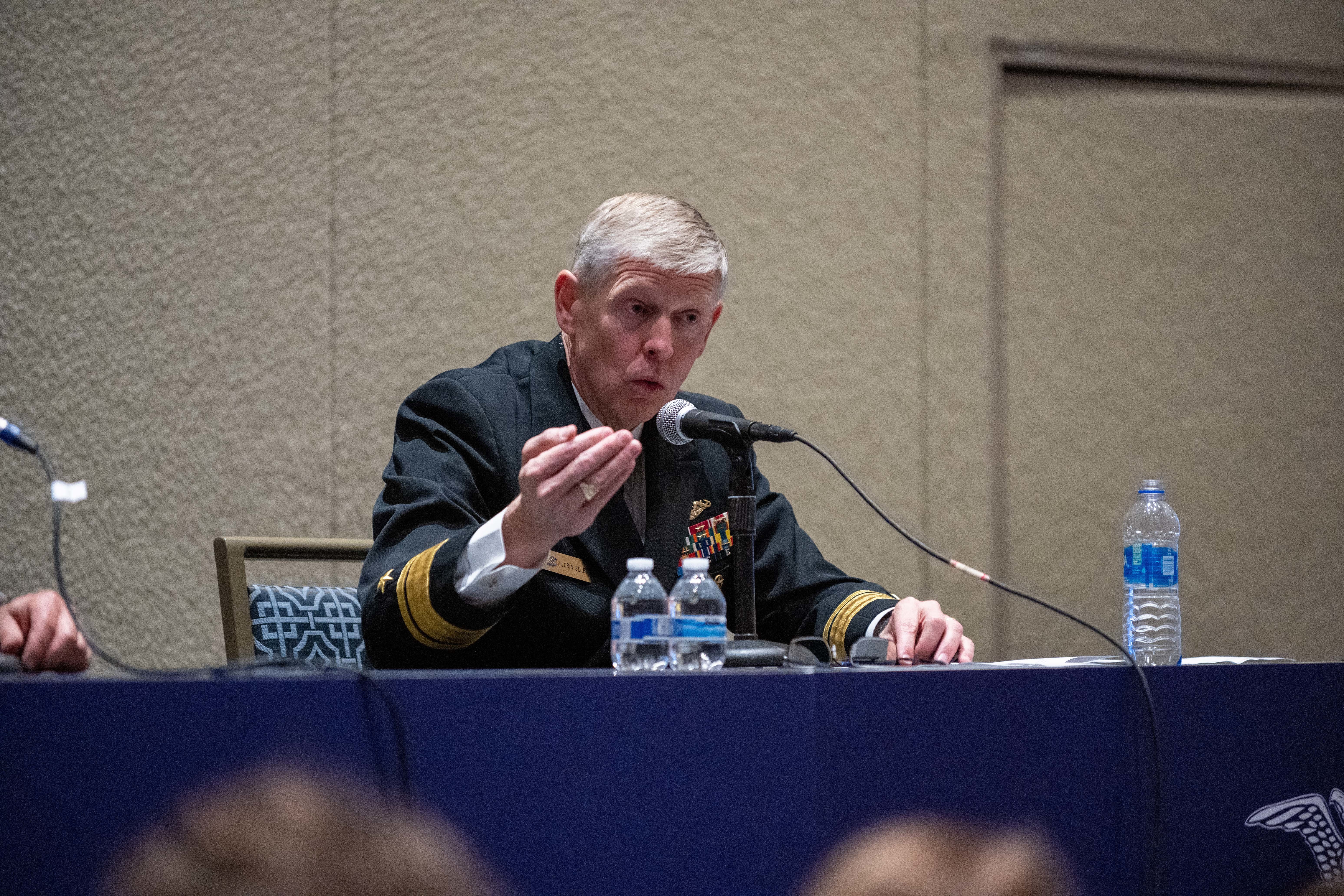
ARLINGTON, Va.—Looking out at his audience, Chief of Naval Research (CNR) Rear Adm. Lorin C. Selby had a message for those wanting to hear his thoughts on naval innovation.
“All of you are my change agents,” said Selby. “Whether you’re a large business, small business or academia, I need your help in helping the Navy and Marine Corps bring about change faster.”
The CNR gave his remarks last week during the “Future of Naval Innovation” panel at the Navy League’s Sea-Air-Space Exposition, held at the Gaylord National Resort and Convention Center in National Harbor, Maryland.
Selby joined Michael Brown, director of the Defense Innovation Unit, which helps the U.S. military make faster use of emerging commercial technologies. They discussed how — in this age of innovation and rapid technological development — the Department of the Navy (DoN) must consider new ways to address challenges from peer competitors; introduce new capabilities to warfighters in both real and virtual experiments; improve processes for dealing with technologies that are digitally and software based; and develop novel approaches to bring industry, academia and government together to solve naval problems with speed and at scale.
“There have been more technological changes in the past three decades than since the Industrial Revolution,” said Selby, “especially when it comes to data and digital capabilities. I’m on a mission to find new processes and procedures — to solve problems rather than set new requirements.”
Brown underscored the CNR’s sentiment: “There was a time when the U.S. government and military led the way in overall research and development [R&D] in our nation. In fact, in 1960 the U.S. government accounted for about 36% of global R&D. Today, that number is around 3%.”
To tout the importance of agile and creative thinking when it comes to naval innovation, Selby promoted his vision for reimagining naval power, including “the small, the agile and the many.”
The idea of “the small, the agile and the many” involves small, unmanned, autonomous platforms that can be constructed, tested and adapted quickly; can be built in large numbers; and are less expensive than larger platforms. These air, surface and subsurface vehicles can be outfitted with a variety of sensors and payloads for diverse missions.
By being built relatively inexpensively, and in greater numbers, these platforms offer multiple advantages: (1) They can be deployed in unique formations to confound and confuse adversaries and (2) if they’re shot down or lost, American forces will have dozens, even thousands, of backups in place. Against an adversary’s expensive platforms, this could play a significant role in deterring aggressive actions.
Selby believes the concept of “the small, the agile and the many” represents a viable Strategic Hedge for supporting the large and complex platforms making up the bulk of today’s force structure. Quickly developing unmanned, autonomous systems will provide a technological edge to the 21st-century Navy and Marine Corps, in whatever future conflict they engage.
The CNR's vision is also spotlighted in a special issue of Future Force—a professional magazine of the naval science and technology community, published quarterly by ONR.
During the panel, Selby also highlighted the importance of experimentation and demonstration in enhancing and expanding naval capabilities. One example the CNR cited was last year’s U.S. Pacific Fleet-led Unmanned Integrated Battle Problem 21.
In that exercise, a large number of multi-domain unmanned platforms — many sponsored by the Office of Naval Research, including unmanned aerial, surface and underwater vehicles — were put into real-world, “blue-water” environments, working in sync with manned platforms in actual combat drills designed to support Pacific Fleet objectives in the Indo-Pacific region.
Another experimentation effort is SCOUT, an ONR-sponsored, repeatable system for identifying alternative ways to bring unmanned technologies to problems, operationalize them and get them to scale.
“Exercises like IBP-21 show what can be done with COTS [commercial off the shelf] products and what obstacles arise that prevent us from going faster,” said Selby. “Such events involving a variety of participants strike the right balance between competition and collaboration — and strengthen our overall warfighting capabilities.”
Warren Duffie Jr. is a contractor for ONR Corporate Strategic Communications.

